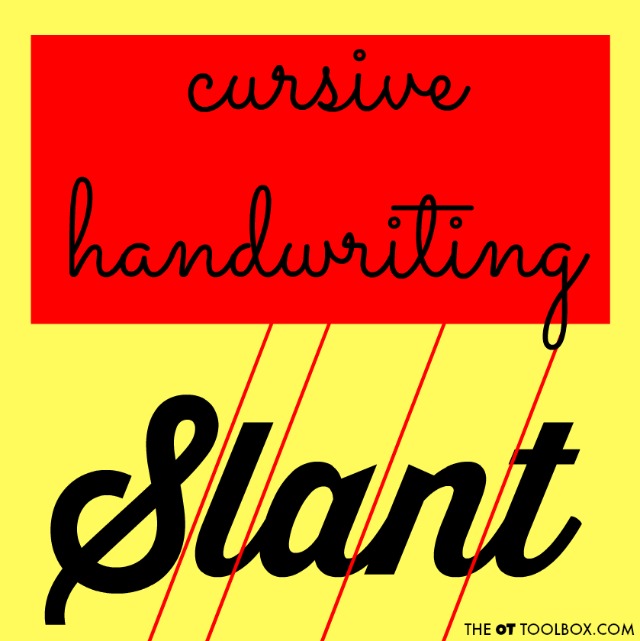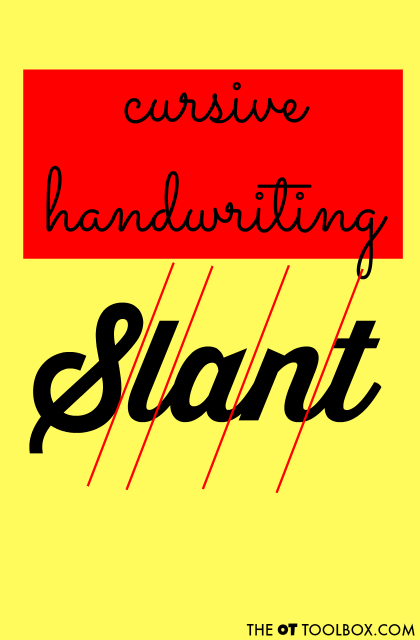A unique feature of cursive writing is the slant of letters. Typically cursive writing slant towards the right.
While slant of cursive writing may not be a huge deal when it comes to overall legibility, the biggest area to address and correct is consistent slant direction.
If all of the letters are leaning in one direction, it helps with the overall legibility of the written piece. If there is a variety of pencil stroke directions or inconsistent pencil stroke slants then legibility is affected.
Cursive writing slant
First, it’s important to note that cursive handwriting traditionally does have a slanted position. The tilted angle of the paper enables slanted letters. However, slanted writing is not a MUST for cursive.
The Handwriting Without Tears program teaches and promotes an upright position of letters on the page. Another cursive handwriting program that does not promote a slanted font includes the Spalding font.
As explained in our left-handed cursive post, students who write with their left hand will struggle to write with a slanted cursive style and will naturally write with a more upright formation of letters.
How to Teach Cursive Slant
There is some evidence (although from an old source) indicating a progression of slanted printed work to cursive slant as helpful in the progression toward slanted cursive writing.
However, additional changes in font of printed work may be difficult for the child with visual perceptual or visual motor skills.
The article mentioned above indicates that the progression of from printed work to cursive is made easier with a slanted print step.
Inconsistent cursive letter slant in handwriting
If letters are leaning in all directions legibility is affected. There may be several reasons for these this to occur.
Pencil control is one issue that interferes with cursive slant. Letter formation inconsistencies mixing styles of writing a letter formation can affect slant as well.
Fluidity and tension in holding the pencil can result in slanted letters and consistencies.
Connectors between letters can affect slant. This happens when one letter is not connected correctly to the next or inefficiently connect to the next.
Tips related to cursive writing and slant of letters:
- Slanted handwriting font is not necessary.
- Focus first on letter formation, then fluency including rhythm and speed of handwriting.

Enstrom, E. (1966). In Second Grade Handwriting: The Acceptance of Slant Print. Elementary English, 43(4), 409-412. Retrieved from http://www.jstor.org/stable/41387583
New Feature...DOWNLOAD THIS POST AS A PDF! CLICK HERE







